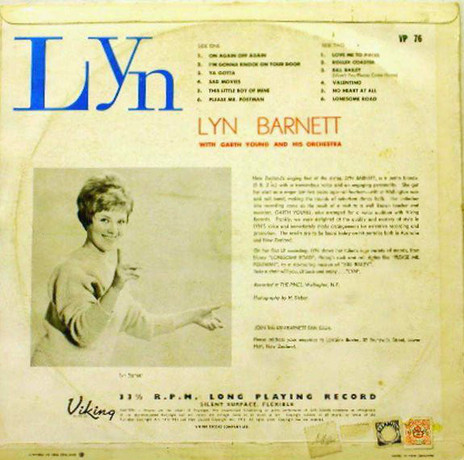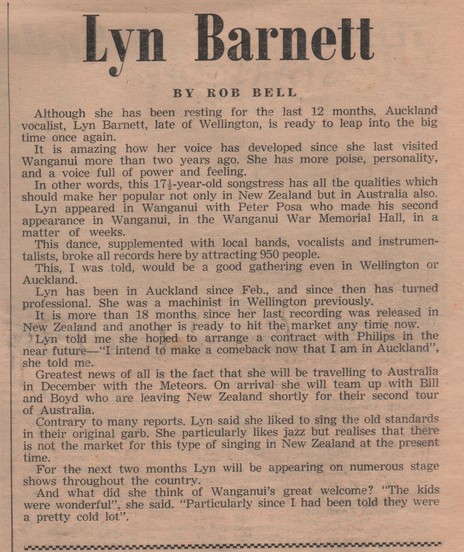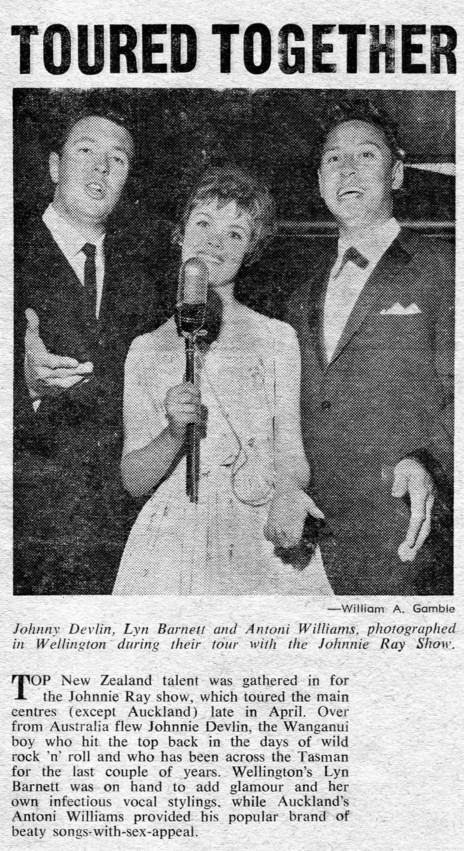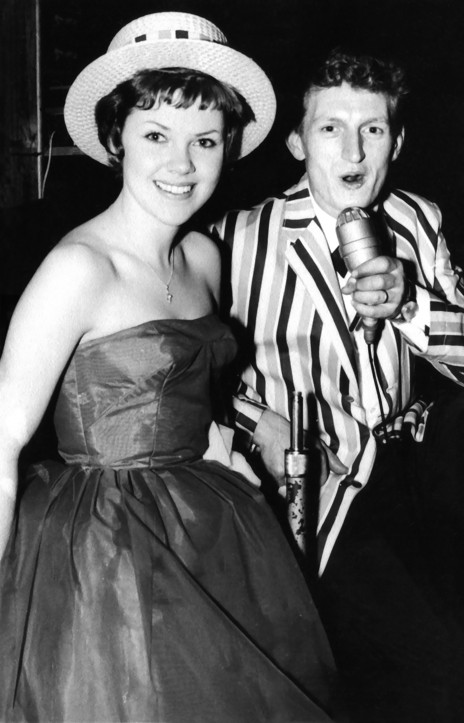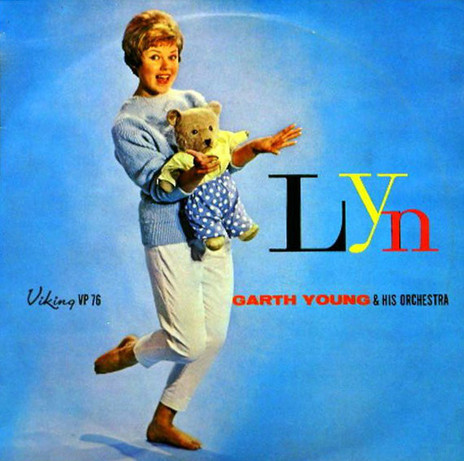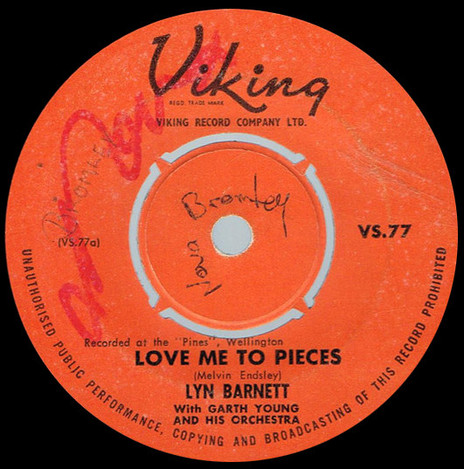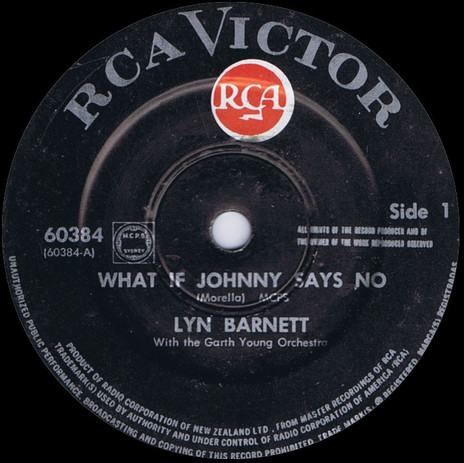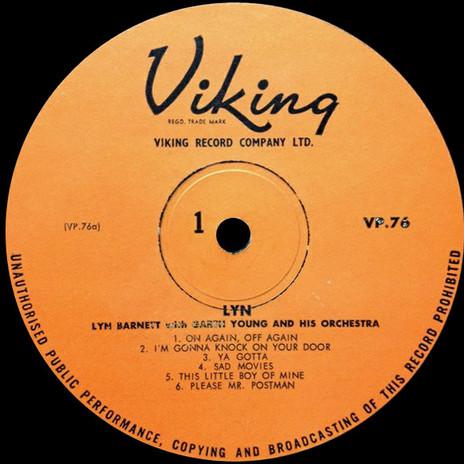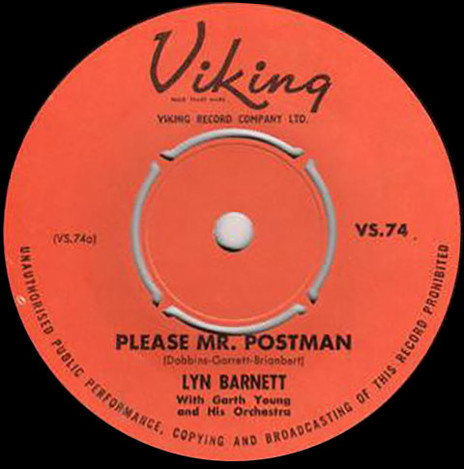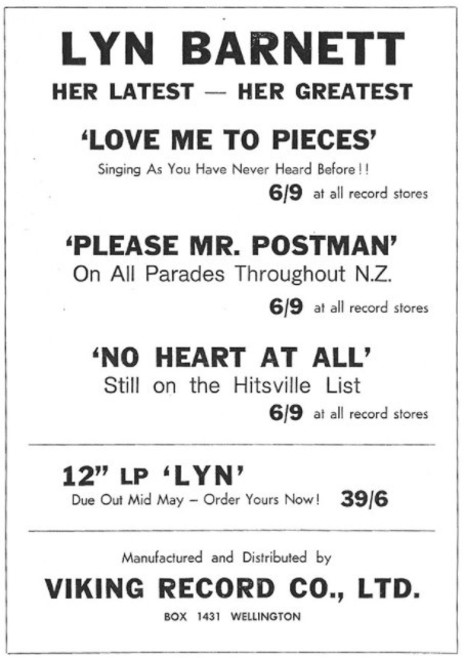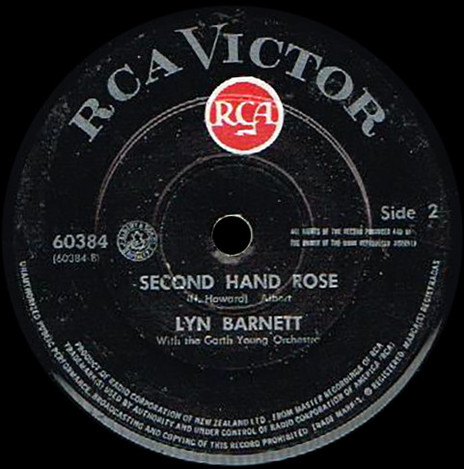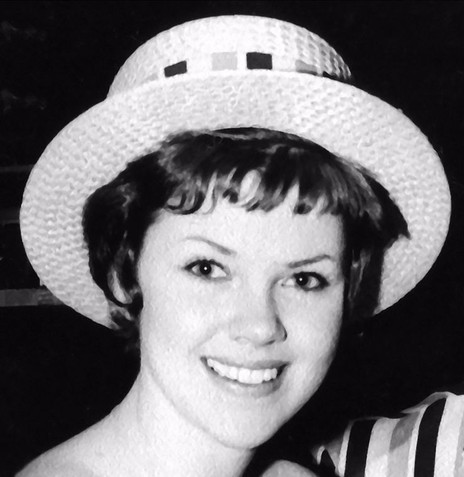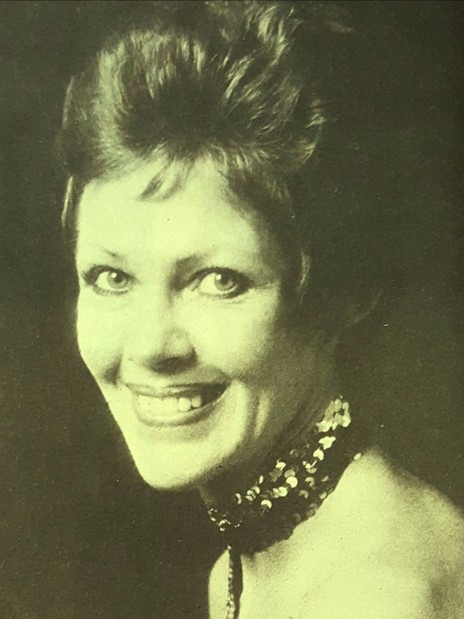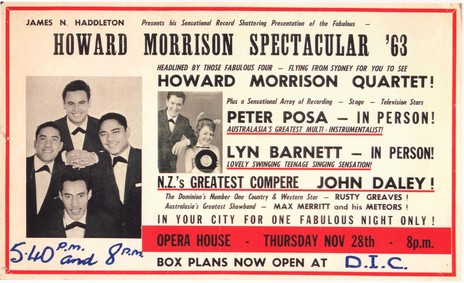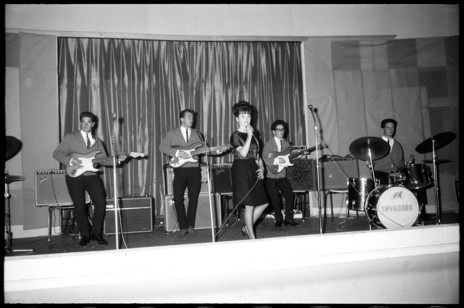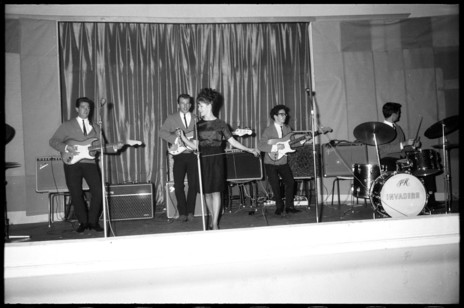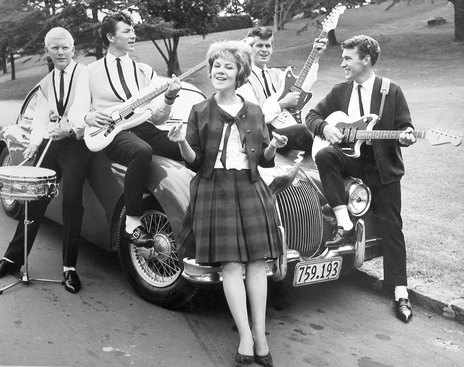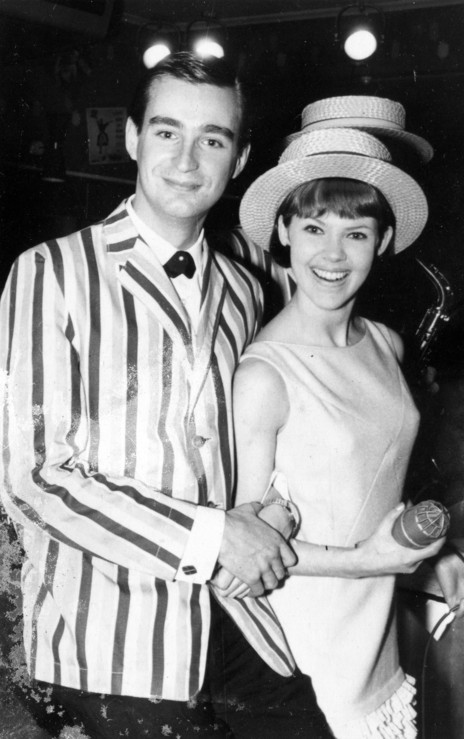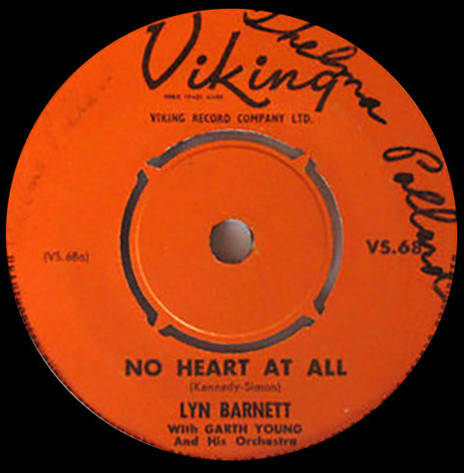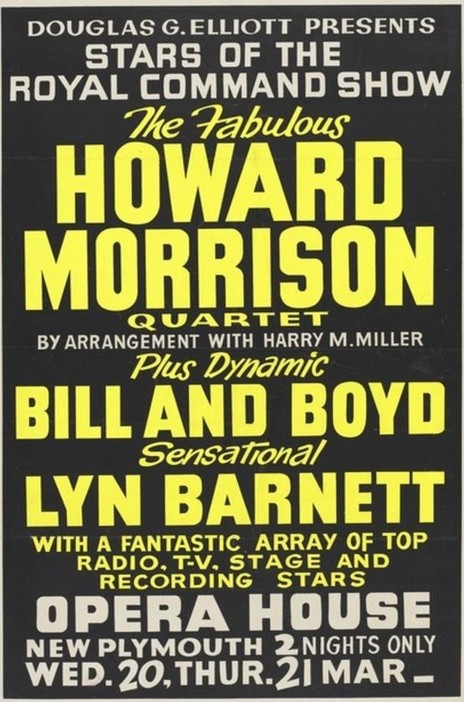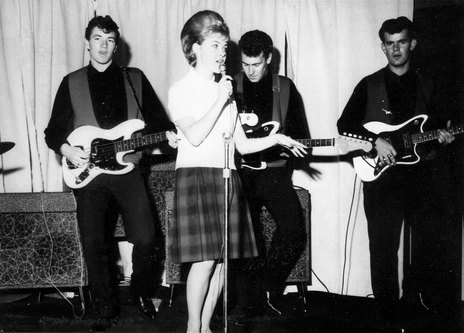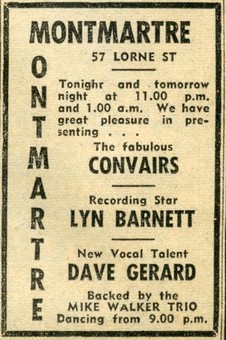Barnett married and moved to Australia, where she appeared often on the TV pop show Bandstand. But the closest she got to recording there was jingles and backing vocals. When she died in Sydney in 2017, aged 72, it was the solitary nature of her death that made the headlines in Australia rather than her musical contribution.
She spent her childhood in Kelburn, the leafy university suburb of Wellington, and was a 14-year-old school girl when she made her public performing debut in 1960. Two years later she recorded her first single, on Viking, backed by Wellington pianist Garth Young and his Orchestra. ‘No Heart At All’ was a US pop standard by Simon and Kennedy; the B-side was Ray Charles’s ‘Little Boy of Mine’.
At 16, Barnett was chosen to be a support act to emotive US singer Johnnie Ray on his 1962 New Zealand tour.
Other singles for Viking quickly followed: ‘Please Mr Postman’ (a full year before the Beatles’ version) b/w ‘On Again Off Again’ (it reached No.4); ‘Love Me to Pieces’ b/w ‘Ya Gotta’; ‘Ordinary Guy’ b/w ‘Aren’t Some People Funny’ (recorded with The Sundowners).
At 16, Barnett was chosen to be a support act to emotive US singer Johnnie Ray on his 1962 New Zealand tour. Lyn – her only album – followed. Produced and arranged by Young, it gathered together many of her singles, and new material was recorded at the Pines Cabaret on Wellington’s south coast. The selections give the impression that the pert and perky Barnett was being prepared for a longer career as a cabaret artiste: the album featured pre-rock’n’roll standards such as ‘Bill Bailey (Won’t You Please Come Home)’ and ‘Lonesome Road’. Her last two singles were on RCA Victor (‘What If Johnny Says No’/‘Secondhand Rose’: also recorded with Young) and on Lexian (‘Birthday Party’).
Barnett appeared at the isolated Pines cabaret – where sophisticated adults could dine, dance and drink into the early hours of the morning – backed by Young’s combo, and shared the stage with singers such as Tommy Adderley and Tony Fisher.
The next couple of years were a blur of touring, guest spots, recording, appearing on television and singing in Australia. In 1963 she toured New Zealand twice with the Howard Morrison Quartet, appearing alongside other support acts such as Bill & Boyd, and Peter Posa; Max Merritt and his Meteors were often the backing band.
The next couple of years were a blur of touring, guest spots, recording, TV appearences and singing in Australia.
In February 1964 Barnett had to cancel her appearance on the Startime Spectacular tour – which also featured Bill & Boyd, and Max Merritt and his Meteors – and she recommended Dinah Lee as a replacement. This gesture led to a breakthrough in Lee’s career.
Three months later Barnett was based in Auckland, appearing on the AKTV2 pop shows Let’s Go and On Stage 64. Aged 18, she married Mike Leyton, English-born singer with the Merseymen, the resident band at Phil Warren’s Beatle Inn. The couple had met a year earlier, when they were on the same bill at a dance hall. Leyton (born Michael Puddefoot) and Barnett intended to continue singing as a husband-and-wife team and soon moved to Australia. (Leyton eventually joined Ian Saxon in jazz-rock ensemble SCRA).
Barnett returned home briefly in 1970 for a season at Tommo’s Place, and – fresh from “the peak of Australian success” – as a support act for John Rowles.
(Barnett was joined in Australia by her younger sister, Christine, who briefly sang with BLERTA. Ten years earlier, almost simultaneous with Lyn, she had enjoyed a similar career, starting at 14 to record several singles for the Lexian label. These were all in the Helen Shapiro mould, with titles such as ‘Teenage Love’, ‘I Listen to My Heart’, ‘Cry for You’, and ‘No One to Cry to’.)
In 1971 Lyn had had a serious car accident in Sydney, requiring 68 stitches. After a long recovery period she had her own group in Sydney, featuring blind ex-Devils keyboardist Claude Papesch (she sings BVs on his 1974 jazz-funk LP Hammond Electrique, on which the drummer is Bruno Lawrence).
“I spend about three months of the year in Sydney,” Barnett told the New Zealand Women’s Weekly in 1974, “and my home is on the North Shore there. I also spend three months each year in Japan and Hong Kong. The rest of the year is spent interstate in Australia, including about eight weeks on the Gold Coast, after which I always take a week’s holiday, just relaxing and soaking up the wonderful Queensland sun … Perth and Adelaide are my favourite cities. Adelaide is very cultural, especially as far as theatre is concerned – much more, I think, than Sydney or Melbourne.”
The Weekly’s Rita Thomas interviewed Barnett “in the subdued lounge of the Stokes Valley Motor Inn”. She can’t decide whether her eyes are blue or brown (“Blue,” says Lyn, “Going on pink.”), but her brown hair is still cut in a short, gamin style. Her bottle-green frock is embroidered with beads. “I buy antique clothes,” said Barnett, “then spend hours beading designs on them. I also have a mania for shoes, but I have a serious side to my nature, too. I am a great Labour advocate – a member of the Australian party, taking part in all their campaigning.”
Barnett was singing commercials for Sydney radio and TV stations and had received offers from Australia labels to resume recording. But, she told Thomas, “I would not be allowed to choose my own songs, so I don’t.” Her latest original song, ‘Isle Of Wight’, was going down well at cabaret shows. (NZWW, 12 August 1974)
A pop pioneer in 1960s New Zealand, in recent years Barnett lived a reclusive life in Sydney. She was described by her neighbours as a woman who loved playing jazz records. When her death was reported, Dinah Lee wrote on Facebook, “I am so sad to hear of the passing of Lyn Barnett. Lyn was a big star in New Zealand, one of the first female pop stars. I took over from Lyn on a tour she was on back in ’64 because of a death in her family. I was asked to take her place and that was how I really got noticed. Lyn I thank you for your great talent I am so sorry that you have departed us, but your memory will still be a very strong one for me. Rest In Peace, Lyn Barnett: my sympathy and love go to your family and friends.”
Shane, whose pop stardom came at the end of the 1960s, wrote, “As a fan in that early 60s Auckland club scene I can still easily recall Lyn’s beautiful smile and how at home she was when performing on stage. A natural. RIP lovely lady.”
